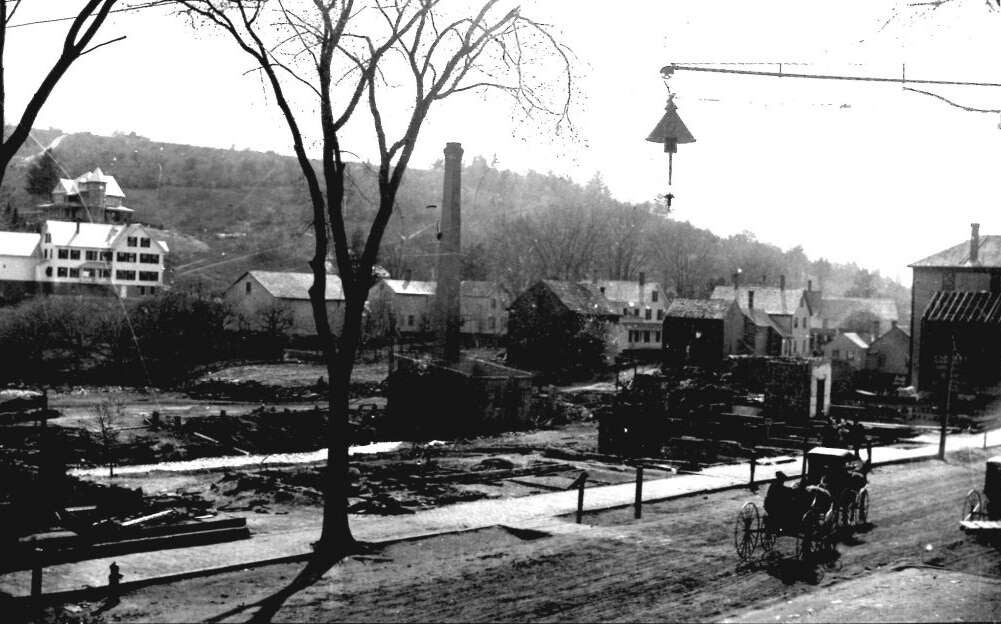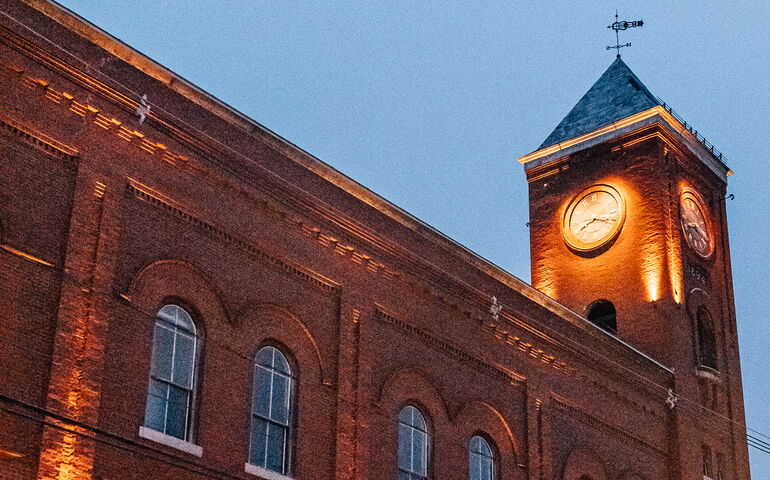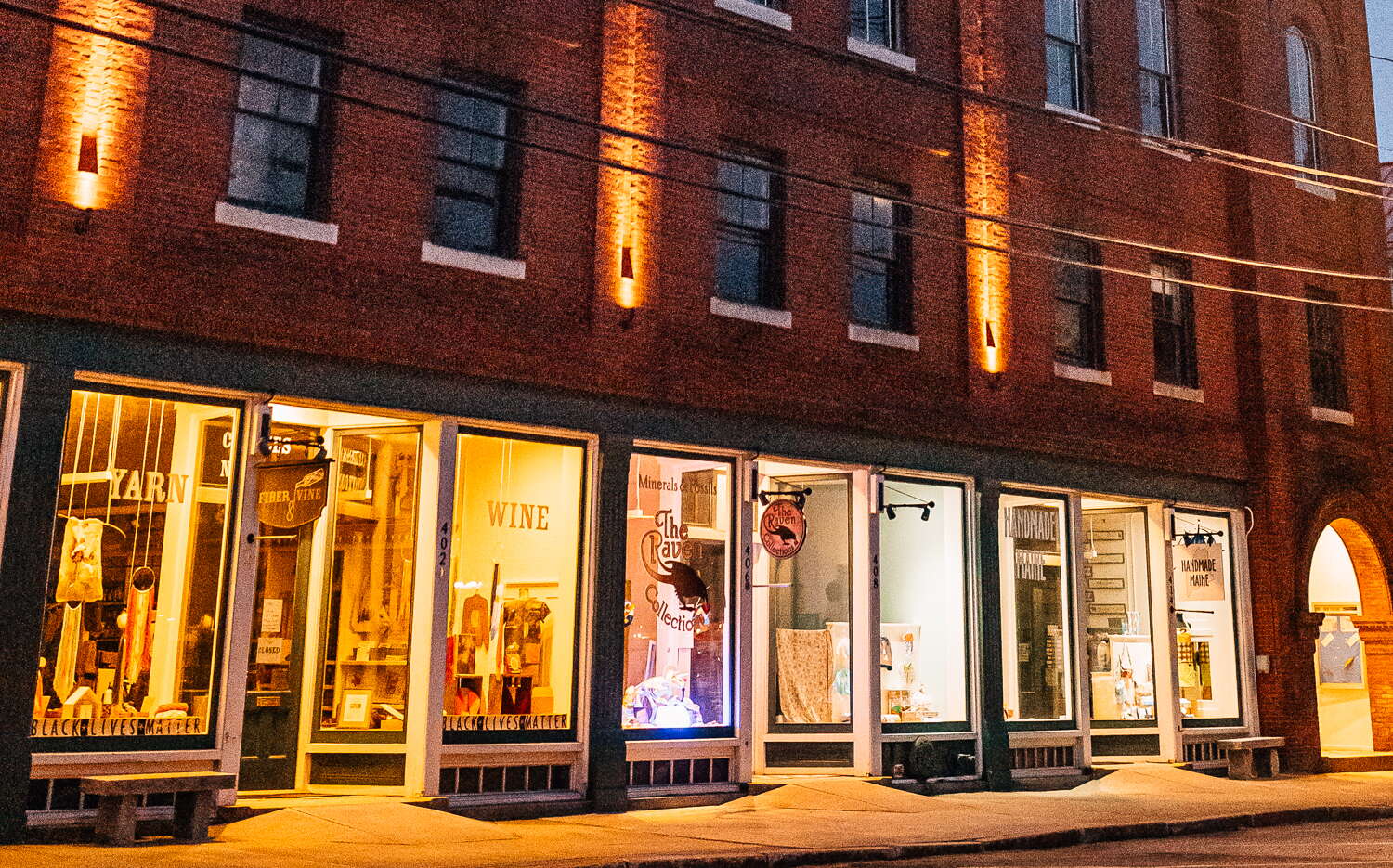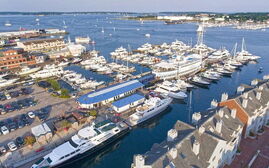
Norway Opera House will use new funds to revitalize, reopen historic performance space
 Courtesy / Cait Bourgault
Norway’s historic opera house illuminates Main Street at night.
Courtesy / Cait Bourgault
Norway’s historic opera house illuminates Main Street at night.
It’s been nearly 40 years since the upper-story performance spaces at the Norway Opera House, over a century old, were last usable.
But renovations there are now expected to begin, using $1.79 million in funds approved this week by the U.S. Senate as a part of the FY24 Transportation, Housing and Urban Development Appropriations Bill.
“This isn't just a win for us — it's a promise of vibrancy, a nod to our heritage, and a leap toward an exciting future,” said Scott Berk, president of Norway Downtown, which has led rehabilitation of the building.
The money will be directed toward immediate structure repairs, according to a news release. Roof trusses, back wall repairs including window replacements, and a completely new roof will be added first. That will allow the internal scaffolding to be removed from the second and third floors, opening up the performance and balcony levels.

Originally built in 1887, the opera house was rebuilt in 1894 after a fire swept through parts of town, leaving much of the downtown burned to the ground.
The building, listed on the National Registry of Historic Places, has been a the center for commerce and entertainment and a site for graduations, dances, theater and traveling shows. The structure is characterized by a distinctive clock tower and Romanesque arch.
Starting in the mid-1970s, the opera house was owned by a succession of private owners.
The town took possession of the building by eminent domain in 2007, following a partial roof collapse and rear wall damage, compromising the integrity of the building.
The upper stories hadn’t been used for decades and the storefronts were vacated when the roof collapsed.
In 2002, the town of about 5,000 residents was designated a “Main Street Maine” community in honor of its character and historic assets, and the potential to build a thriving downtown.
Since then, Norway Downtown, an affiliate program of the Maine Downtown Center, has been at the forefront of the town’s efforts to revitalize Main Street. Developments have included the opening of new businesses and the rehabilitation of the opera house’s first floor.

The first floor has housed several locally owned businesses, including the Raven Collections, Fiber & Vine, and Handmade in Maine.
The larger goal for the opera house is to protect, preserve and operate it as a creative performance space, shared community venue and economic generator for downtown Norway and the Oxford Hills region.
The first phase of the project, to secure the building’s integrity and to renovate the first-floor retail spaces, has been completed. Next up is bringing the space back as a fully functioning performance venue.
“We are proud to work in concert with Norway Downtown to finally realize the dream of welcoming the public back into the Norway Opera House,” Matt Delamater, the president of the Norway Opera House, said of the latest round of funding. “It's a partnership that's paved the way to this momentous milestone.”
Historic restoration
In all, the bill approved by Congress included $9.7 million for six historic restoration projects throughout Maine.
“Historic institutions are part of the fabric of Maine communities and enrich the lives of residents,” said U.S. Sen. Susan Collins, R-Maine. “As vice chairman of the Senate Appropriations Committee, I worked hard to secure this funding, which will help connect Mainers with their heritage for generations to come.”
Other recipients are:
- Penobscot Theatre Co.: $239,000 to support safety and facility improvements at the 102-year-old Bangor Opera House.
- Ellsworth Historical Society: $500,000 to rehabilitate a 19th-century historic building for economic and educational development.
- Christ Episcopal Church in Gardiner: $890,000 to rehabilitate a historically significant bell tower, which houses an original Paul Revere foundry bell.
- Maine Charitable Mechanic Association, Portland: $2.86 million to modernize and improve the accessibility of Mechanics’ Hall.
- Washburn Norlands Foundation in Livermore: $3.42 million to restore two 19th-century historic properties for educational and community uses.













0 Comments